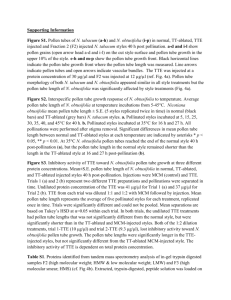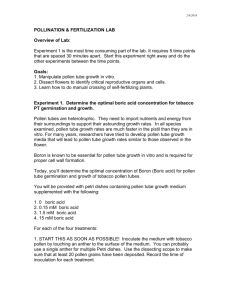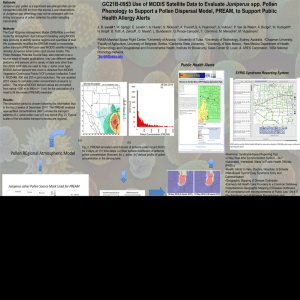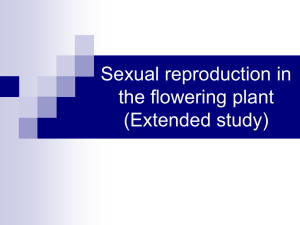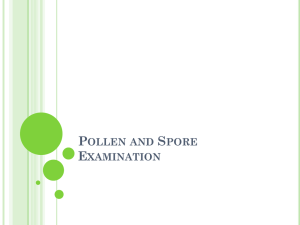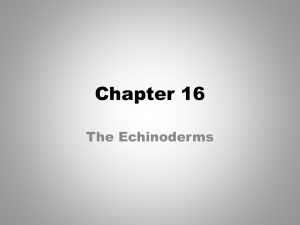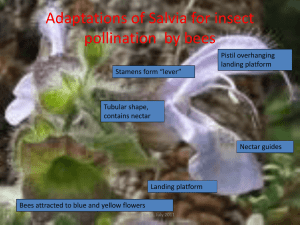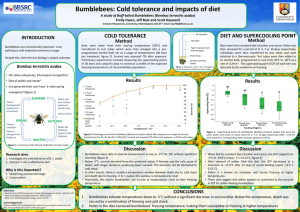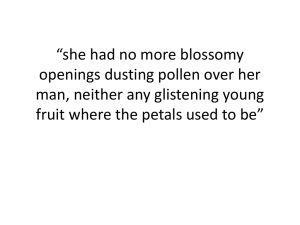Growth Handout 1
advertisement
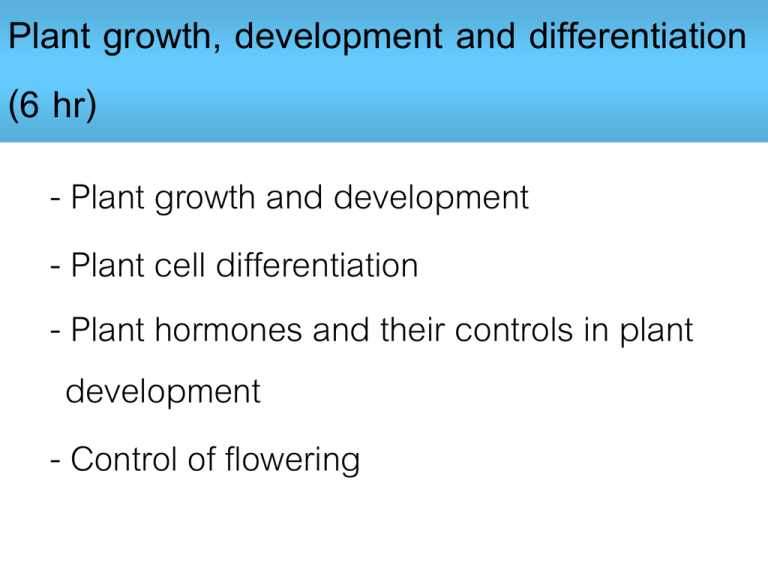
Plant growth, development and differentiation (6 hr) - Plant growth and development - Plant cell differentiation - Plant hormones and their controls in plant development - Control of flowering Growth Development การเติบโต การเจริญ www.gutenberg.org Plant growth and development depends on environmental signals Plant growth regulators: plant hormones Three stages of plant development -Embryogenesis -Vegetative development - Reproductive development Embryogenesis การเจริญของเอมบริโอเริ่มจากการสร้ าง แนวแกนราก-ยอด (root-shoot axis) และ พักตัวอยู่ในเมล็ด Web Figure 16.1.A A summary of the events involved in the establishment of polarity in zygotes of the brown alga Fucus. (A) The zygote is polarized by an asymmetric stimulus from the environment, such as unilateral light. (B) A current flows (charged calcium ions move) through the polarized but still spherical zygote at the site at which the rhizoid will emerge, driven by Ca2+ uptake in the shaded half of the cell, from which the rhizoid will emerge. The current (Ca2+) flows out on the opposite side. (C) Cell polarity becomes fixed when actin microfilaments assemble at the site of rhizoid emergence and a cell wall is assembled around the zygote. The cell wall completely surrounds the zygote, but its composition differs in the rhizoid and thallus halves. Vesicles containing sulfated polysaccharides are transported by actin filaments to the plasma membrane and deposited in the cell wall only at the site of rhizoid emergence. (D) Finally, the zygote divides, and the rhizoid cell grows at its tip. Web Figure 16.1.C Cytoplasmic vesicles that contain specific cell wall components become asymmetrically distributed early in the development of Fucus zygote polarity. (A) A toluidine blue stained Fucus zygote before fixation of the polar axis. The toluidine blue dye stains a wall component in vesicles or in walls. (B) The embryo after establishment of rhizoid– thallus polarity, with toluidine blue staining confined to the cell wall in the rhizoid portion of the embryo. (From Quatrano and Shaw 1997, courtesy of R. S. Quatrano.) Embryogenesis apical-basal polarity Vegetative development Reproductive development Taiz and Zeiger 2006 Vegetative development การเจริญเติบโตในระยะก่อนเจริญพันธุ์ (vegetative stage) เนื ้อเยื่อเจริญส่วน ปลาย (apical meristem) แบ่งตัว เกิด กลุม่ เซลล์ที่จะเจริญต่อไปเป็ นใบ (leaf primodium) ข้ อ (node) และปล้ อง (internode) การเจริญเติบโตเกิดในลักษณะซ ้าเดิม เช่นนี ้อย่างต่อเนื่อง เกิดเป็ นต้ นพืชที่ ประกอบด้ วยส่วนที่เป็ นปล้ อง และข้ อที่มี ตาข้ าง (bud) และใบเจริญอยู่ Reproductive development การเข้ าสูร่ ะยะเจริญพันธุ์ (reproductive stage) ควบคุมโดยปั จจัยสิง่ แวดล้ อม เช่น อุณหภูมิและ จานวนชัว่ โมงแสง เนื ้อเยื่อเกิดการเจริญเป็ น floral meristem ส่ วนต่ างๆ ของพืชเกิดมาจาก meristem Vegetative development Cell division, growth, and differentiation การเจริญเติบโตของราก การเปลีย ่ นแปลงรูปร่าง ของเซลล์ใน differentiation zone การยืดตัวของเซลล์ ใน Elongation zone การสร ้างเซลล์ใหม่ โดย apical root meristem ใน division zone http://www.soilandhealth.org/index.html การเกิดรากแขนง เนื ้อเยื่อที่ไม่ใช่ meristem สามารถเปลี่ยนเป็ น meristem ได้ เช่น เนื ้อเยื่อชัน้ pericycle แบ่งเซลล์เพื่อเจริญต่อไปเป็ นรากแขนง Root X-section http://www.nsci.plu.edu/ Longisection of a root, showing the origin of a lateral. The formative regions are labeled according to mature regions into which they develop. http://www.soilandhealth.org/index.html Cell division, growth, and differentiation>> tissue systems การเติบโต (growth) “การเพิ่มปริมาตรหรือขนาดอย่ างถาวร” การแบ่ งเซลล์ โดยที่ปริมาตรรวมเท่ าเดิมไม่ ถือว่ ามีการเติบโต www.gutenberg.org Cell Growth -Diffuse growth -Tip growth Tip-growth: pollen tube Figure 1 Growing pollen tubes exhibit a pronounced "tip-focused" calcium gradient (top, left and right). The gradient oscillates between high (left) and low (right) levels. The pollen tube was injected with the calcium sensitive dye, fura-2-dextran, and photographed using ratio-metric ion imaging. Growing pollen tubes also exhibit a pH gradient in which the tip is slightly acidic (bottom, left and right). Back from the tip is a prominent alkaline band. This band oscillates between high (left) and low (right) pH. The pollen tube was injected with the pH sensitive dye, BCECF-dextran, and subjected to ratio-metric ion imaging. Bar = 10 μm. (From Hepler et al. 2006.) http://www.testtubelilies.com/ Figure 5 Lily pollen tube exhibits a prominent cortical actin fringe in the apical domain (a). The fringe can start 1–5 μm behind the apex and extend for an additional 5–10 μm. In the shank of the tube, the actin microfilaments are evenly dispersed throughout the thickness of the tube. This pollen tube was prepared by rapid-freeze fixation and freeze substitution. The pollen tube was then rehydrated and probed with anti-actin antibodies, and imaged by confocal laser scanning microscopy (b). Lily pollen tube prepared as above but stained with an antibody to lily ADF (actin depolymerizing factor). Note that ADF colocalizes with the cortical actin fringe. Bar = 10 μm. (From Lovy-Wheeler et al. 2005, 2006.) Growing cells - cell expansion - cell elongation - Biochemical wall loosening - Deposition of new material - Water uptake to increase turgor ผนังเซลล์ปฐมภูม ิ (primary wall) ทิศทางการขยายขนาดของเซลล์กาหนดโดย รูปแบบการจัดเรียงตัวของ cellulose microfibril ทีผ ่ นังเซลล์ longitudinal transverse Cell growth rate = m (p – Y) turgor Yield threshold
